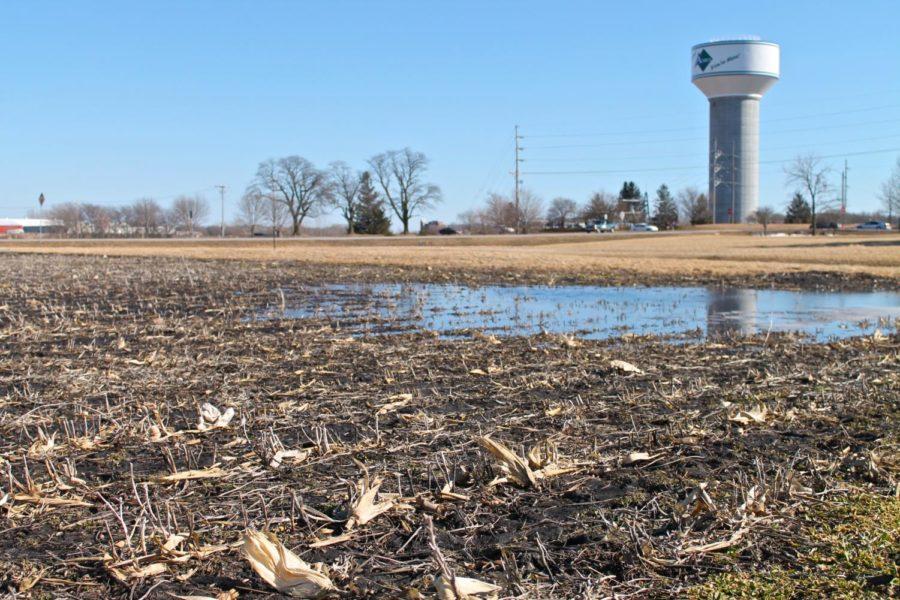Crops escape winter damages, prepare for summer weather conditions
Richard Martinez / Iowa State Daily
A plot of crops just south of campus, off Mortensen Parkway, sits flooded as the winter weather subsides melting tremendous amounts of snow that used to cover the area. While irrigation systems around the plots handle the majority of melted snow runoff, some water simply pools on top of the soil.
March 16, 2014
Iowa agriculture should not see a major change in its harvest this year even though the state of Iowa has experienced a brisk winter.
According to the Iowa Preliminary Monthly Weather Summary for February of this year, Iowa survived its seventh coldest winter in 142 years of records.
The winter weather pattern started in mid-October and continued on through February, as stated in a report by Harry Hillaker, a state climatologist.
“Winter weather doesn’t really influence crops or crop prices because there aren’t crops in the ground. There isn’t anything out in the fields to be damaged by it,” said Dermot Hayes, professor of economics at Iowa State University.
The crops for this year will face hardships in the summer, when arid weather could occur and disrupt the growing process. In the past, there have been issues with soil moisture, said Hayes.
“It would be good to get it replenished, and the snow will help a little bit towards that,” he said.
Susana Goggi, associate professor for the seed science center department, has similar views but said spring temperatures will play the biggest role in crop development this year.
” [The] frequency and amount of rain during the growth period, temperature and rain during flowering and during seed formation and development will determine how bountiful the crops will be,” said Goggi.
Farmers will have to pay special attention to the growing process if Iowa is to expect a dry summer season such has occurred the past two years.
According to the Farmers Almanac, Iowa may have to deal with a warmer and drier April and May.
The famous weather almanac foresees this summer to be hotter and rainier than normal, with the hottest months being July and August.
For farmers, seed selection, the use of fertilizer and the planting date are important, said Goggi.
This will be especially true if this summer is to be as hot as it is predicted to be.
“Yield is highly dependent on the environmental conditions during plant growth and development,” Goggi said.
“Bottom line is that the cold has had little impact on crops or crop prices because the ground is fallow at this time of year,” said Hayes.
However, when spring time comes to stay and thaws the ground, the extra snow may help replenish water reserves lost due to two dry years, he said.







